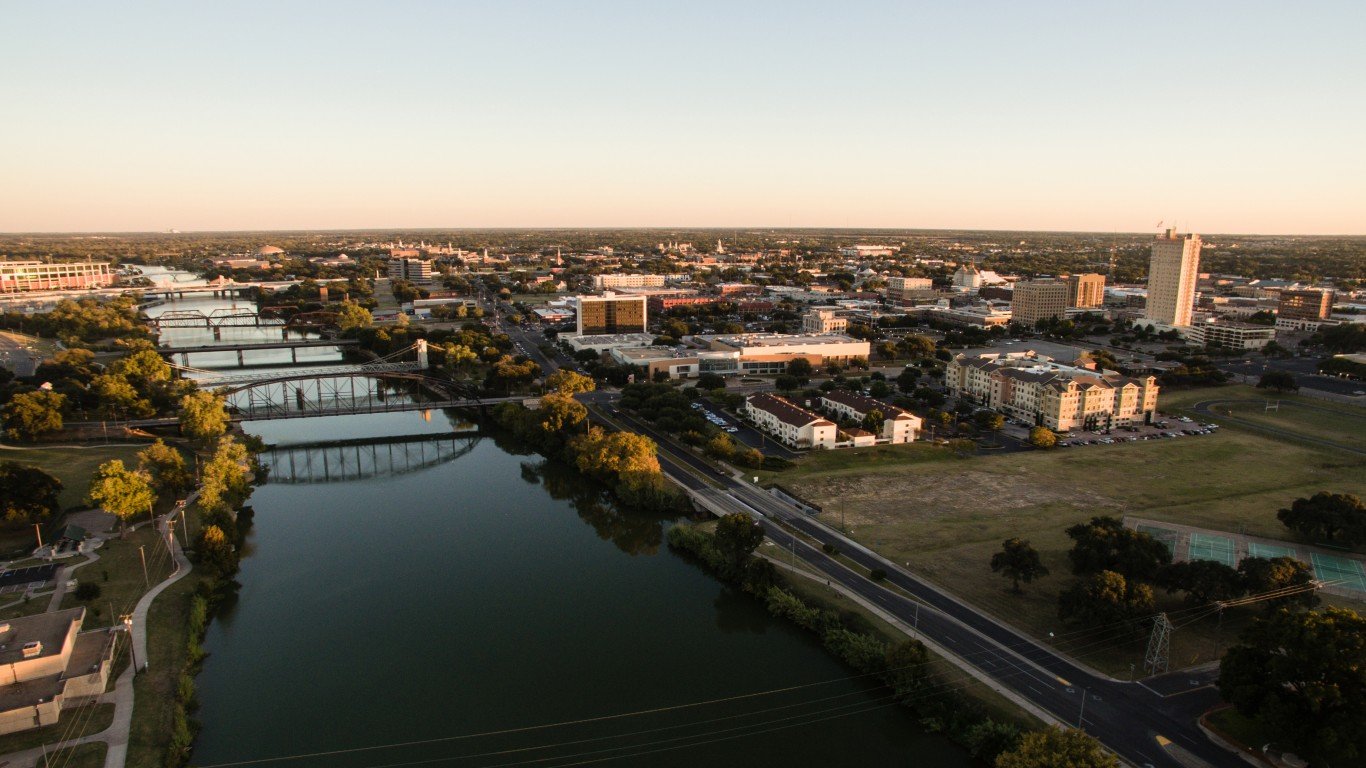

Inflation is surging in the United States – in large part because of rising food prices. In cities across the country, food today is 8% more expensive on average than it was a year ago, and American families are feeling the pinch.
According to the Economic Policy Institute, a nonprofit think tank, a family of four – two adults and two children – can expect to pay an estimated $9,835 on food in 2022. This amount varies across the country, however.
In Texas, a family of four can expect to spend an average of $8,660 on food in 2022, the fourth lowest amount among states, according to the EPI’s Family Budget Calculator. This amount assumes a nutritionally adequate diet for two adults and two children where almost all food is bought at a grocery store and prepared at home.
Food costs are partially driven by what residents can afford, and states with higher food costs also often have higher than average family incomes, and vice-versa. Texas is no exception. Just as food costs are lower than average in Texas, so, too, are incomes. The typical family in the state earns $76,073 a year, compared to the national average of $80,069.
Texas residents are just as likely to rely on government assistance to afford groceries than the typical American. An estimated 12.1% of the state population rely on SNAP benefits, formerly known as food stamps, exactly the same as the national SNAP recipiency rate.
Food cost figures in this story are 2022 estimates from the EPI and family income and SNAP recipiency figures are five-year estimates from the U.S. Census Bureau’s 2020 American Community Survey.
| Rank | State | Est. avg. annual food costs, family of 4 ($) | Median family income ($) | SNAP recipiency rate (%) |
|---|---|---|---|---|
| 1 | Hawaii | $14,042 | $97,813 | 11.80% |
| 2 | Massachusetts | $11,674 | $106,526 | 12.50% |
| 3 | Maine | $11,480 | $76,192 | 13.50% |
| 4 | Vermont | $11,430 | $83,023 | 11.50% |
| 5 | New York | $11,180 | $87,270 | 15.20% |
| 6 | Connecticut | $10,910 | $102,061 | 12.40% |
| 7 | Rhode Island | $10,834 | $89,330 | 15.90% |
| 8 | New Hampshire | $10,832 | $97,001 | 7.40% |
| 9 | New Jersey | $10,750 | $104,804 | 9.10% |
| 10 | California | $10,543 | $89,798 | 10.20% |
| 11 | Washington | $10,525 | $92,422 | 12.00% |
| 12 | Florida | $10,385 | $69,670 | 13.90% |
| 13 | Colorado | $10,384 | $92,752 | 8.00% |
| 14 | Maryland | $10,293 | $105,790 | 10.80% |
| 15 | Oregon | $10,175 | $80,630 | 16.00% |
| 16 | Delaware | $10,169 | $84,825 | 11.50% |
| 17 | Virginia | $10,064 | $93,284 | 8.50% |
| 18 | Nevada | $9,990 | $74,077 | 12.70% |
| 19 | Minnesota | $9,936 | $92,692 | 8.40% |
| 20 | Wyoming | $9,917 | $81,290 | 5.90% |
| 21 | Pennsylvania | $9,903 | $80,996 | 13.90% |
| 22 | North Dakota | $9,824 | $86,798 | 7.30% |
| 23 | Idaho | $9,786 | $70,885 | 10.00% |
| 24 | Montana | $9,782 | $72,773 | 10.10% |
| 25 | Louisiana | $9,748 | $65,427 | 15.80% |
| 26 | Alabama | $9,631 | $66,772 | 13.70% |
| 27 | Tennessee | $9,595 | $68,793 | 13.10% |
| 28 | South Dakota | $9,546 | $77,042 | 9.50% |
| 29 | Georgia | $9,507 | $74,127 | 12.80% |
| 30 | Alaska | $9,419 | $92,648 | 12.90% |
| 31 | Mississippi | $9,350 | $58,923 | 15.20% |
| 32 | Kansas | $9,341 | $77,620 | 7.80% |
| 33 | Arizona | $9,338 | $73,456 | 11.20% |
| 34 | New Mexico | $9,297 | $62,611 | 17.70% |
| 35 | Illinois | $9,274 | $86,251 | 13.10% |
| 36 | North Carolina | $9,267 | $70,978 | 12.50% |
| 37 | Utah | $9,239 | $84,590 | 6.90% |
| 38 | Oklahoma | $9,223 | $67,511 | 13.40% |
| 39 | Missouri | $9,104 | $72,834 | 11.10% |
| 40 | South Carolina | $9,086 | $68,813 | 11.70% |
| 41 | Nebraska | $9,081 | $80,125 | 8.70% |
| 42 | Wisconsin | $9,058 | $80,844 | 10.90% |
| 42 | Michigan | $9,058 | $75,470 | 13.50% |
| 44 | Ohio | $8,904 | $74,391 | 13.30% |
| 45 | Iowa | $8,885 | $79,186 | 10.60% |
| 46 | Arkansas | $8,838 | $62,067 | 12.20% |
| 47 | Texas | $8,660 | $76,073 | 12.10% |
| 48 | West Virginia | $8,634 | $61,707 | 17.10% |
| 49 | Indiana | $8,544 | $73,265 | 9.80% |
| 50 | Kentucky | $8,527 | $65,893 | 13.60% |
Sponsored: Find a Qualified Financial Advisor
Finding a qualified financial advisor doesn’t have to be hard. SmartAsset’s free tool matches you with up to 3 fiduciary financial advisors in your area in 5 minutes. Each advisor has been vetted by SmartAsset and is held to a fiduciary standard to act in your best interests. If you’re ready to be matched with local advisors that can help you achieve your financial goals, get started now.
Thank you for reading! Have some feedback for us?
Contact the 24/7 Wall St. editorial team.

